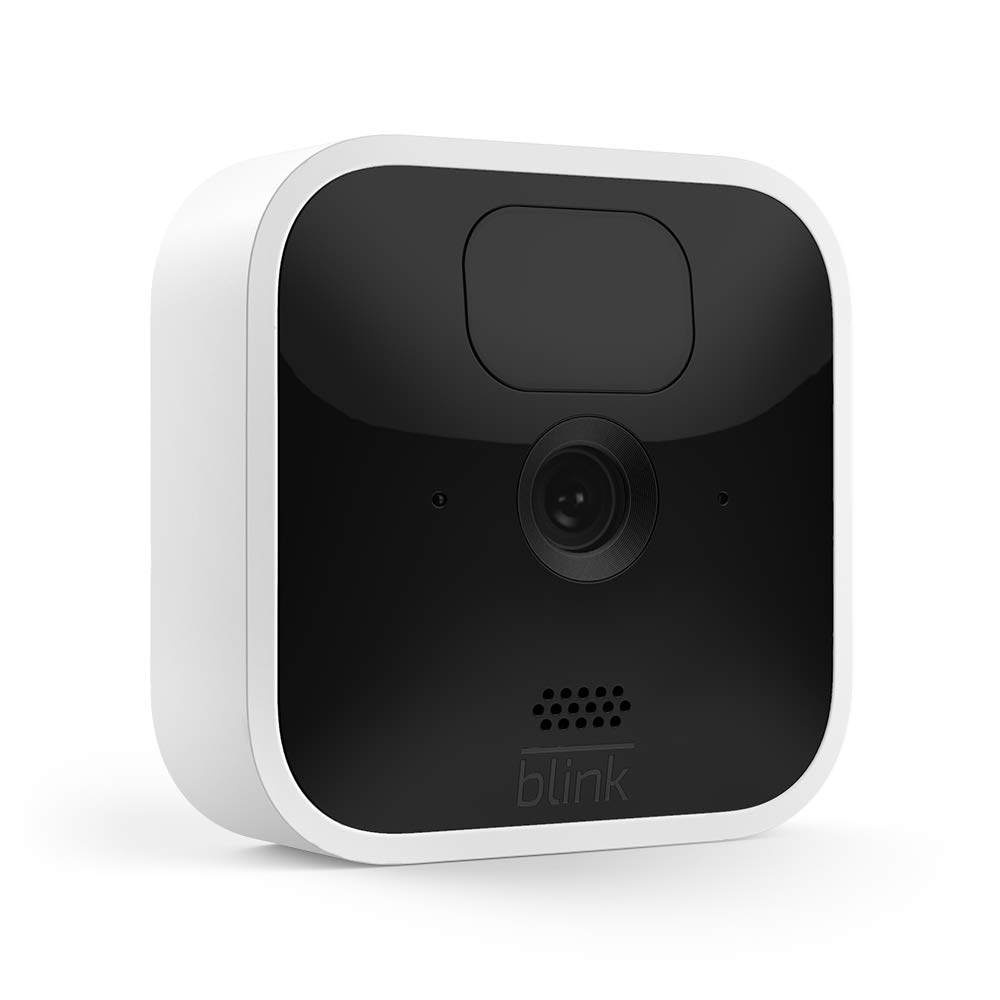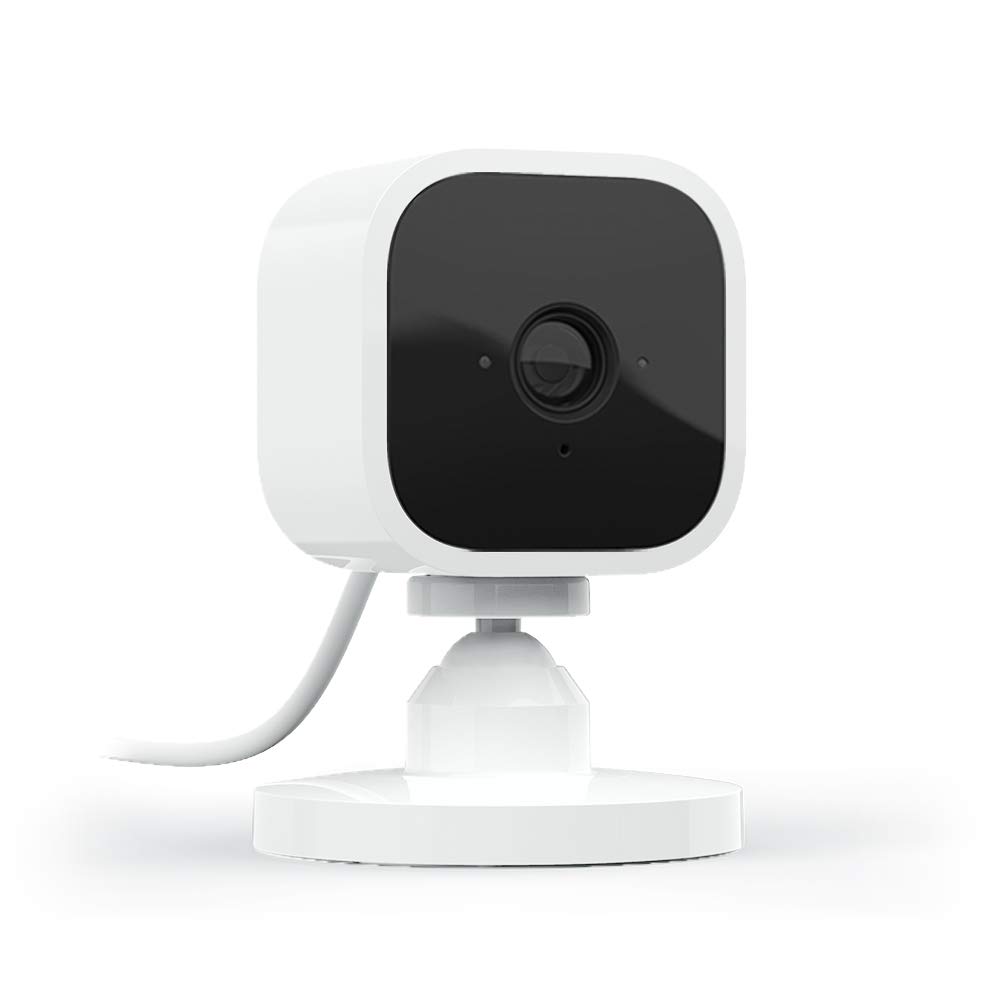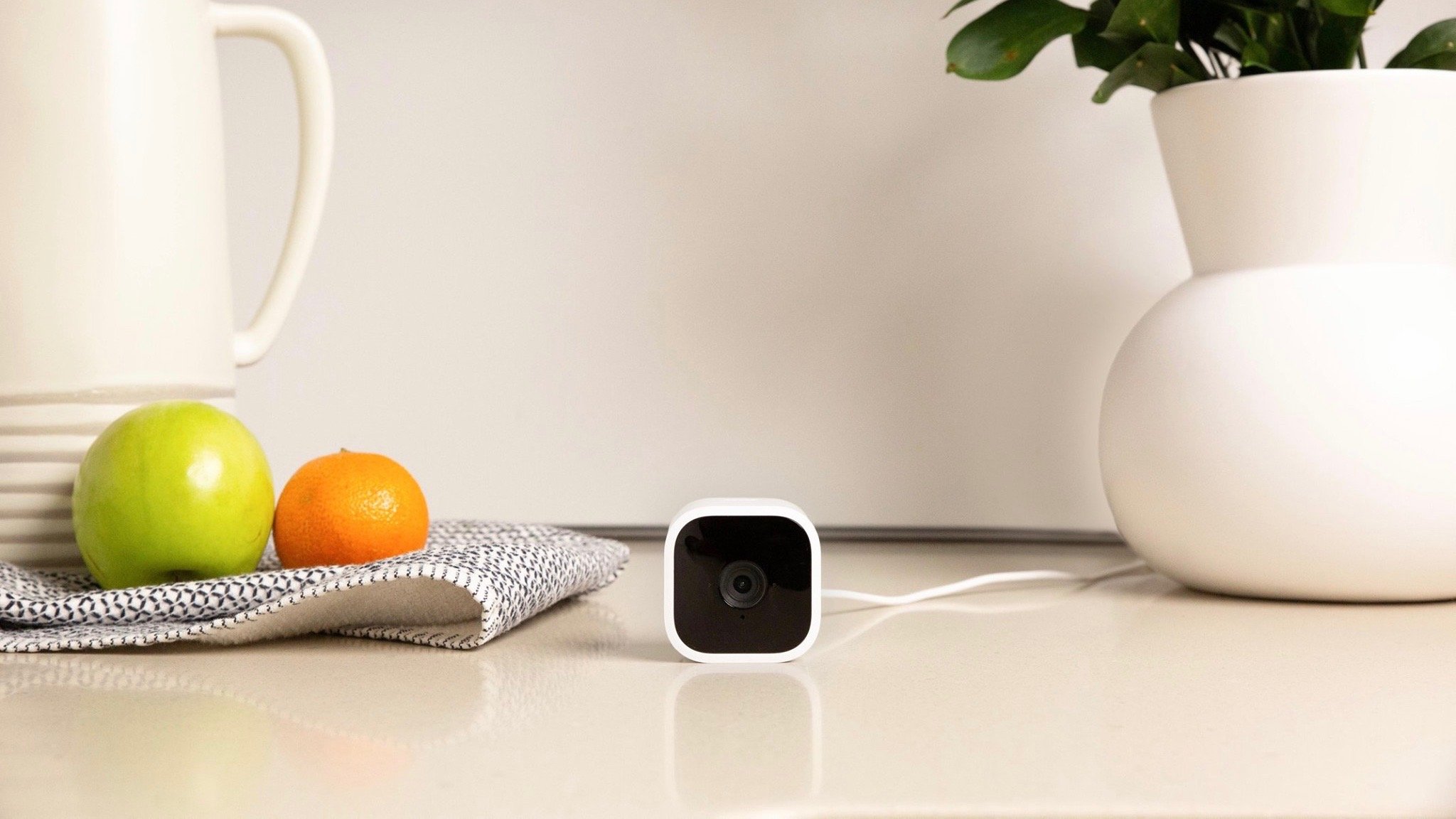Blink Mini vs. Blink Indoor: Which should you buy?
Blink has two solid indoor cameras to protect your home. We'll help you decide which is the better fit.

Privacy zones and local storage
The new Blink Indoor stands alone among battery-powered security cameras with an absurd four-year lifespan on four AA batteries with the optional Battery extender. Blink has also added new privacy zones, temperature monitoring, and a local storage option to avoid cloud storage fees.
Pros
- Records in 30 FPS
- Ships with Sync Module 2
- Privacy zones
- Battery pack makes mounting easy
- Up to four-year battery life with accessory
Cons
- More expensive for virtually same specs as Mini
- Local storage upgrade also available for Mini

Cheaper with the same specs
Blink Mini has one of the lowest costs for a quality indoor camera you'll ever find, and it still matches its new indoor counterpart in resolution, FPS, and other important benchmarks. It comes with a stand or can be mounted on a wall, but must be plugged into an outlet to work.
Pros
- Records in 30 FPS
- Very cheap for respectable specs
- Option for local storage incoming
- Small size for subtle placement
Cons
- No privacy zones
- No temperature monitoring
- Power cord limits placement
- Must buy Sync Module 2 separately
When weighing the Blink Mini versus the Blink Indoor security cameras, you'll find two sibling designs with more in common than not. The new Blink Indoor has a two-year battery life and a mounting kit while the Mini has a Micro-USB charging cable and stand, but the specs, storage options, and even the weight are identical. While the Blink Mini costs less for nearly the same tech, the new Blink Indoor has some key improvements that may make it worth the extra cost.
Blink Mini vs. Blink Indoor: Both built to last
Both the Blink Mini and the Blink Indoor can be mounted, but the Mini will have its power cord trailing from it to the nearest power outlet, which may look unsightly and more importantly makes it more noticeable. Conversely, both cameras can technically sit on a stand, but only the Mini ships with one, so it's simpler to stick it on a shelf without worrying about mounting it on a wall.
The new Blink Indoor has a projected two-year battery life off of two disposable lithium AA batteries, estimated to power about 98 minutes of live view, 720 minutes of motion-activated recording, and 80 minutes of two-way talk during that duration. Blink also released a Blink Camera Battery Expansion Pack that doubles the Blink Indoor's battery compartment to hold four AAs — increasing its lifespan to an alleged four years.
The Blink Mini runs off of a simple USB-A power cord that plugs into the provided wall adapter. It'll take about as much power as a phone charger, which won't add much to your electricity bill but will admittedly cost more across two years than a couple of batteries.
The positive of most plug-in cams over battery cams is that you can use high-energy activities like live view or two-way talk without worrying about them draining its energy stores prematurely. In fact, many battery cams with year-long estimates last a fraction of that time if they're placed in areas with lots of motion. However, the Blink Indoor's thrifty energy use, combined with its battery pack, makes this much less of a concern than usual.
Blink Mini vs. Blink Indoor: Similar specs, minor OS differences

As the spec table below will show, Blink likes to have uniform performance standards and hardware design across its cameras. Buy either model, and you'll have the same field of view, resolution, two-way speaker, temperature range, and even the same weight down to the gram.
| Header Cell - Column 0 | Blink Indoor | Blink Mini |
|---|---|---|
| Size | 2.8" x 2.8" x 1.4" | 2" x 1.9" x 1.4" |
| Weight | 1.7oz / 48g | 1.7oz / 48g |
| Temperature range | 32 to 95 degrees Farenheit (0 to 35 degrees Celsius) | 32 to 95 degrees Farenheit (0 to 35 degrees Celsius) |
| Available Colors | White | White |
| Field of view (FOV) | 110º diagonal | 110º diagonal |
| Frames per second (FPS) | Up to 30 | Up to 30 |
| Resolution | 1080p HD | 1080p HD |
| Battery Life | Up to 2 years on 2 AA batteries (included); upcoming option for separate Battery Extender that runs on 4 AA batteries for up to 4 years | N/A; must be plugged in with 2m micro-USB cable and power adapter |
| Audio | 2-way with speaker | 2-way with speaker |
| Cloud storage | Free through 2020, then $3/month per camera or $10/month for unlimited cameras | Free through 2020, then $3/month per camera or $10/month for unlimited cameras |
| Local storage | Yes, up to 64GB using the Blink Sync Module 2 | Yes, up to 64GB using the Blink Sync Module 2 (must buy separately) |
| Motion detection | Yes | Yes |
| Temperature monitoring | Yes | No |
| Privacy zones | Yes | No |
| LED indicators | Optional blue LED to indicate it is recording, red LED when recording in night vision | Optional blue LED to indicate it is recording |
The similarities extend to how Blink handles video storage for both devices. In the past, Blink offered free cloud storage for its cameras. Now, the Mini and Indoor get free cloud storage through 2020, but starting in 2021 you'll need to pay $3/month per camera or $10/month for any number of Blink cameras to have your video clips stored and accessible on the Blink Home Monitor app.
Get the latest news from Android Central, your trusted companion in the world of Android
If, however, you prefer to store your footage locally — saving you money and keeping private footage of your home out of the cloud — you can use the Blink Sync Module 2 to store up to 64GB of video clips locally. The Blink Indoor Camera Kit ships with the Sync Module 2, but you'll need to buy a 64GB USB flash drive yourself. For the Blink Mini, you'll have to buy the Sync Module 2 and the thumb drive separately.
Where the Indoor Cam starts to differentiate itself is in new features found on Blink's app. To start, both cameras let you set activity zones where alerts will trigger (or won't trigger) to avoid false alarms, but the Indoor Cam now features privacy zones that will be automatically grayed out in any video clips. If you wish to monitor your kid's window at night but gray out their bed area, the Indoor Cam makes that possible.
Another improvement is that the Indoor Cam can monitor nearby temperature, notifying you if conditions for the camera are too hot or cold. This feature is more useful for the new Outdoor Cam than the Indoor Cam, however. Also, the Indoor Cam has a red LED that shines dimly when filming at night; both cameras have a blue LED that indicates filming during the day.
Blink Mini versus Blink Indoor: Which should you buy?

The biggest factor when deciding between these two cameras is cost. The difference between one Mini and one Indoor camera is minimal when you consider the Blink Indoor comes with a $35 Sync Module 2 that you'd have to buy separately to avoid monthly cloud storage fees with the Mini. If, however, you're buying multiple cameras, choosing Blink Minis versus Blink Indoor cameras would compound your savings the more you purchase.
Second, consider where you will place these cams for the best security angle. Is there a shelf that a Mini could sit on comfortably without standing out or tripping people with its wire, or will some areas need a cam mounted high up and out of the way, necessitating a battery pack?
The Blink Indoor's privacy zones are usually more desirable if you have professional monitoring and don't want strangers having unfettered access to your private lives. Since Blink cameras are self-monitored, privacy zones are more useful in making sure private areas aren't visible in case someone hacks into your cloud storage or you want to share censored clips online.
These zones matter more as a sign of what's to come. Blink didn't give the Mini privacy modes, which either suggests that its older architecture doesn't allow them, or Blink is actively denying the Mini features so that you'll buy its more expensive indoor cam. This suggests that further Blink OS improvments may be limited to the Indoor camera in the future.
In the end, you may want to consider buying a mixture of both cameras. Buy at least one indoor cam so you get ahold of the Sync Module 2, more for any spots where battery packs make more sense than wires, then supplement them with cheaper Mini cams to guard areas of your home that don't need any privacy, such as the front doorway. Together, they hold their own against some of the best indoor cameras on the market.

Privacy zones and local storage
Blink hasn't made giant strides with its newest indoor camera, but the option for a possible four years of wireless footage mounted anywhere in your home is not something worth passing up. Capture footage at a solid 30 FPS, then send it to your local storage to avoid Blink cloud fees.

Teeny tiny quality
Plug in any number of these 2-inch camera and place them all over your home for thorough, budget-priced home security, costing a fraction of what you'd typically pay. You have the option to buy a Sync Module 2 for local storage for up to 10 cameras at once.

Michael is Android Central's resident expert on wearables and fitness. Before joining Android Central, he freelanced for years at Techradar, Wareable, Windows Central, and Digital Trends. Channeling his love of running, he established himself as an expert on fitness watches, testing and reviewing models from Garmin, Fitbit, Samsung, Apple, COROS, Polar, Amazfit, Suunto, and more.
